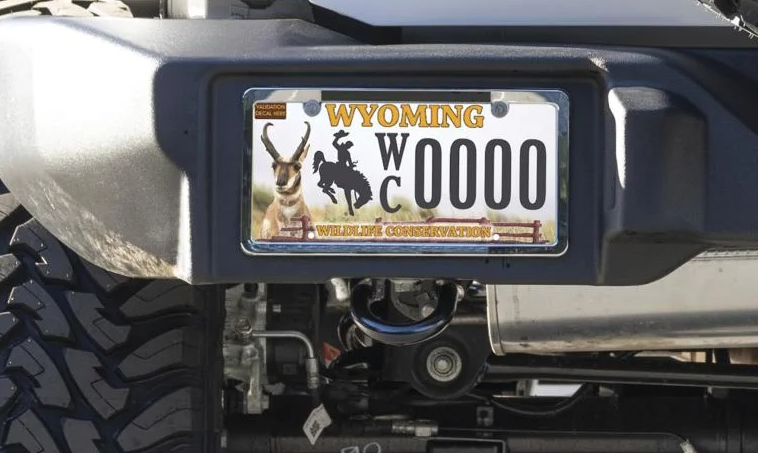Below is a news release from the Wyoming Game and Fish Department.
As you cruise along Wyoming’s scenic roads, you’ll most likely encounter a pronghorn grazing off in the distance. Their presence on the landscape, and now on the new conservation license plate, serves as a reminder of our state’s rich wildlife heritage.
But what happens when you see a big game animal too close to the road, or nearly hit it? Ask anyone who has driven on a Wyoming highway, and you’ll likely hear a story that raises your blood pressure.
There are more than 8,000 wildlife-vehicle collisions annually in Wyoming. That is 21 wildlife collisions every day. The Wyoming Department of Transportation estimates an average of $11,600 in injury and property damage costs per big game collision. The burden grows greater when factoring the impacts to wildlife. Annually in Wyoming, collisions result in $24-29 million in personal injury costs and $20-23 million per year in wildlife costs.
Recognizing the need to protect drivers and help wildlife, the Wyoming Legislature passed House Bill 39 in 2018 to create a wildlife conservation license plate to help fund efforts to reduce crashes between wildlife and vehicles.
In 2023, wildlife-vehicle crashes made up almost 16% of all reported traffic crashes in Wyoming. Highway underpasses and overpasses, coupled with fencing, can reduce crashes by 80-90% and ensure animals can safely cross roads to get to seasonal ranges.
“People in Wyoming take an amazing amount of pride in the diverse and abundant wildlife in our state. The Wildlife Conservation License Plate supports a good cause and shows others that you are part of a movement of people who are making a difference for wildlife and humans,” said Angi Bruce, Director of the Wyoming Game and Fish Department.
Funds generated from the conservation plate help fund overpasses, underpasses, fencing and signage to prevent vehicle-animal collisions along wildlife migration corridors. Since its launch in 2019, the state has issued more than 3,000 conservation license plates, which have raised $968,820 for wildlife crossing projects. When combined with other donations from Wyoming drivers, a total of $1.8 million has been raised for wildlife projects around the state.
“WYDOT is a proud partner in this grassroots movement working to improve safety and maintain connectivity for humans and wildlife alike,” said Darin Westby, Director of WYDOT. “The support from public donations and nonprofit fundraising makes wildlife crossing projects unique for WYDOT, and it’s easy to support a project that has proven successful at reducing crashes.”
The initial price of the plate is $180, with a $50 renewal fee each year, in addition to registration fees. Those who have previously purchased the mule deer conservation plate will need to purchase the new plate as well. The plate is available anytime — not just with renewals. Information on how to buy the Wildlife Conservation License Plate is on the WYDOT website.
There are additional ways the public can reduce wildlife impacts on the road and help big game. The biggest way is by reducing speeds in areas where wildlife are known to be on the road, especially at dawn and dusk, and heed big game crossing signs.
For more information on efforts to prevent collisions with wildlife, visit the Game and Fish Wildlife Crossing webpage.
(Photo credit: Wyoming Game and Fish Department)
